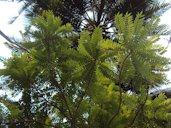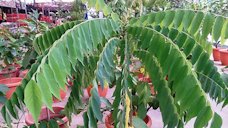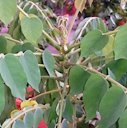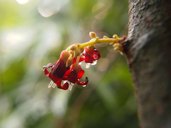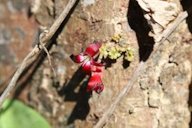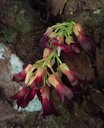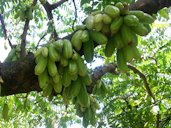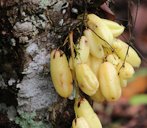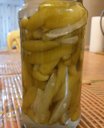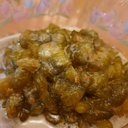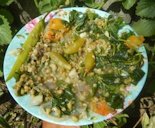| Bilimbi - Averrhoa bilimbi | |||||||||||||||||||||||||||
|---|---|---|---|---|---|---|---|---|---|---|---|---|---|---|---|---|---|---|---|---|---|---|---|---|---|---|---|
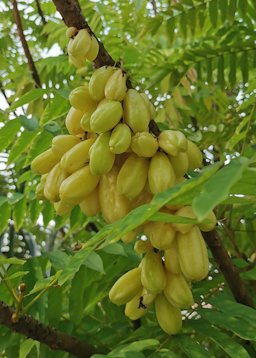 Fig. 1  Bilimbi, Averrhoa bilimbi, Selangor, Malaysia, ripe fruit 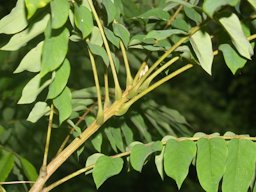 Fig. 2  Bilimbi, Northern Division, Fiji 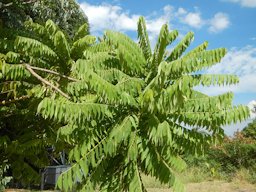 Fig. 3  Branching habit, New Cabalan, Olongapo City, Phillippines 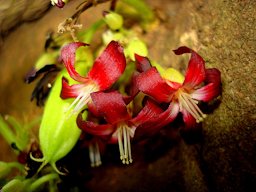 Fig. 7  മലയാളം: ഇലുമ്പിപ്പൂവ് 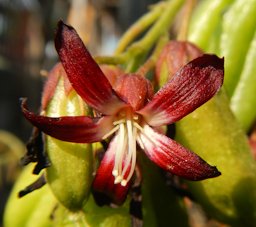 Fig. 8  Kamias in Philippines in Barangay Amsic, Angeles City, Pampanga 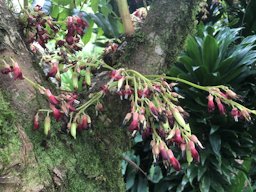 Fig. 9  Bilimbi, San Ramon, Alajuela, Costa Rica 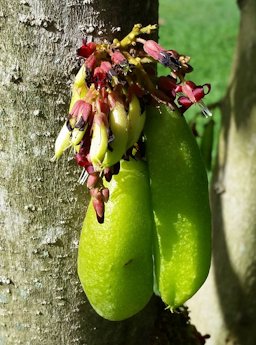 Fig. 13  A. bilimbi, fruits and flowers, at the Honolulu Zoo, Hawai'i 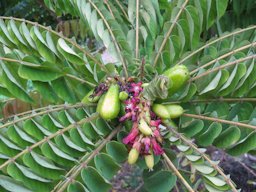 Fig. 14  A. bilimbi (Bilimbi, cucumber tree), fruit and flowers, Waihee, Maui, Hawai'i 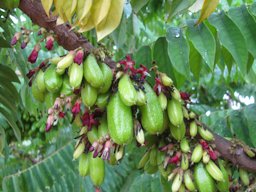 Fig. 15  Fruit and flowers, Waihee, Maui, Hawai'i 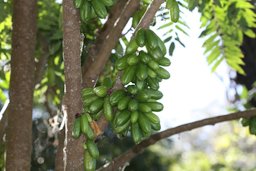 Fig. 16  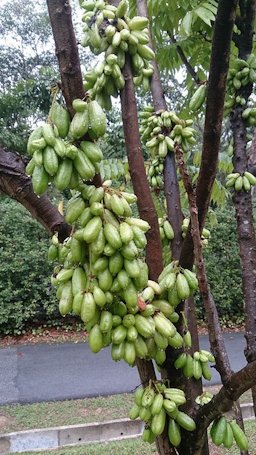 Fig. 17  A. bilimbi, cucumber tree, belimbing wuluh, Indonesia - unripe fruit 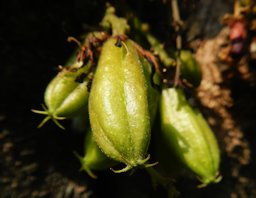 Fig. 18  A. bilimbi or Kamias, Barangay Amsic, Angeles City, Pampanga, Philippines 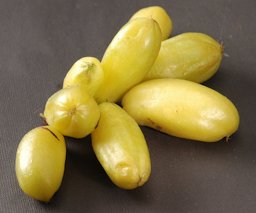 Fig. 19  A. bilimbi, ripe, Indonesia: Belimbing wuluh 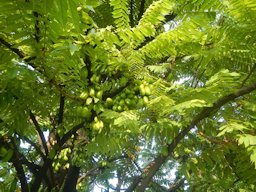 Fig. 24  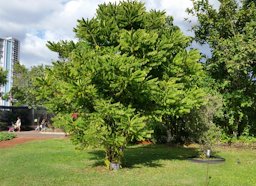 Fig. 25  A. bilimbi, cucumber tree, at the Honolulu Zoo, Hawai'i 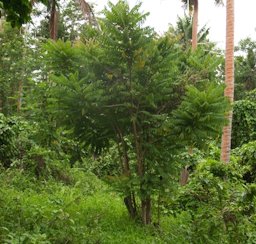 Fig. 26  Bilimbi, A. bilimbi, Northern Division, Fiji 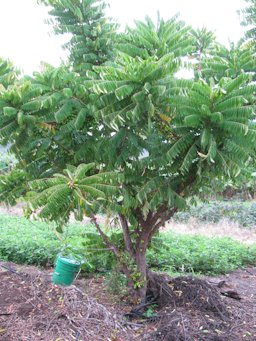 Fig. 27  Habit, Waihee, Maui, Hawai'i 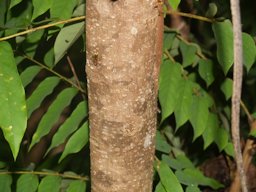 Fig. 28  Bilimbi, A. bilimbi, Northern Division, Fiji 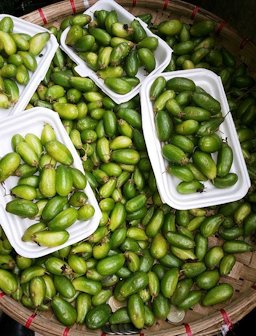 Fig. 29  Mga bungang iba tinitinda, Phillippines 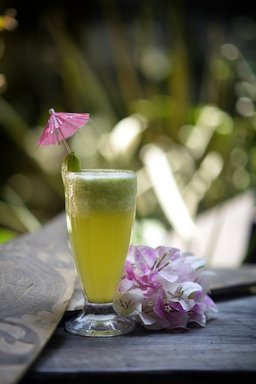 Fig. 30  Kamias cocktail 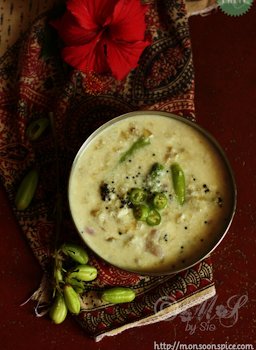 Fig. 31  Bimbli Mosaru Gujju recipe 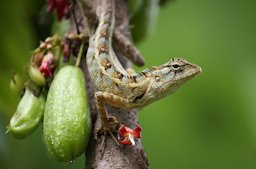 Fig. 35  Oriental garden lizard (Calotes versicolor) on bilimbi (A. bilimbi) tree, Batticaloa, Sri Lanka |
Scientific
name Averrhoa bilimbi L. Common names English: bilimbi, bimbling plum, cucumber tree, bilimbi, tree sorrel; Filipino: kamias; French: blimblim, blinblin, cornichon des Indes, zibeline blonde, zibeline, carambolier bilimbi; Indonesian: belimbing asam, belimbing wuluh; Khmer: tralong tong; Jamaica: bimbling plum, blimblin; Malay: belimbing buloh, belimbing asam, b'ling, billing-billing; Spanish: tiriguro, pepino de Indias, mimbro, grosella China, vinagrillo; Thai: kaling pring, taling pling 1,4 Other Common Names Synonyms A. abtusangulata Stokes, A. obtusangula Stokes Relatives Carambola (A. carambola) Family Oxalidaceae (wood sorrel family) Origin Indonesia, Malaysia USDA hardiness zones 10a+ 5 Uses Fruit; medicinal properties; ornamental Height 16-33 ft (5-10 m) 2,4 Crown Open; somewhat irregular crown Plant habit Evergreen; short trunk soon dividing into a number of upright branches 4 Trunk/branches Bark is pinkish brown; fairly smooth; occasionally flaking off; twigs are softly hairy and break easily 12 Growth rate Growth rates usually are about two to three feet a year 13 Longevity Long-lived tree 4 Trunk/bark/branches Branches stiff, thick, upright 7 Leaves Alternate; imparipinnate; clustered at branch extremities; 11–39 leaflets, ovate or oblong with an acute tip; medium-green 6 Flowers Fragrant; small; purplish to yellowish-green; borne in small panicles directly on the trunk and thicker branches 6 Fruit Look like small cucumbers; ellipsoid or almost cylindrical; faint longitudinal ridges; skin glossy, light green; crisp, juicy, and exceedingly sour flesh 6 Season In India as in Florida, the tree begins to flower around Feb.; blooms and fruits more or less continuously until Dec. 4 Light requirement Full sun; slow growth in shady or semi-shady situations 4 Soil tolerances Does best in rich, moist, slightly acidic, well-drained soil, but also grows and fruits quite well on sand or limestone 4 pH preference 5.5-6.5 3 Drought tolerance Not tolerant 7 Flood tolerance Not tolerant 7 Soil salt tolerance Not tolerant 7 Wind tolerance Susceptible to wind damage 7 Cold tolerance Hardy to 32 °F (0 °C); generally not as cold hardy as the star fruit 5 Plant spacing 20x20 ft (6x6 m) 7 Invasive potential * None reported Pest resistance No pests or diseases have been reported specifically for the bilimbi 2 Known hazard Contains up to 6% oxalic acid, which can cause calcium deficiency and kidney stone 12 Reading Material Bilimbi, University of Hawai'i at Mānoa pdf Averrhoa bilimbi, Agroforestree Database Bilimbi, Fruits of Warm Climates Averrhoa, PROSEA Foundation Belimbing, Archives of the Rare Fruit Council of Australia Origin The tree originated in Southeast Asia and is claimed as a native by Malaysia and the Indonesian Moluccas. The fruit was taken from Timor to Jamaica in 1793, supposedly in Captain William Bligh’s second breadfruit voyage, and was distributed widely in the New World. It may have to come to Hawai‘i with the first immigrants from the Philippines in 1906. In 1815, “almost- sweet” forms of the fruit were first found in the Philippines, but sour forms were preferred. Some of these almost-sweet forms are still found in the Philippines but have not been found in Hawai‘i. 3 In the late eighteenth century, the bilimbi was brought from Indonesia to Jamaica, from where it slowly spread. It is occasionally grown in Africa and tropical America. 6 Description The bilimbi, Averrhoa bilimbi, L., (Oxalidaceae), is closely allied to the carambola but quite different in appearance, manner of fruiting, flavor and uses. The tree may be distinguished readily from the carambola by its larger leaves, which have five to seventeen pairs of leaflets in place of two to five. 2,8 A pretty, usually small or medium sized tree. The tree is long-lived, reaches 16 to 33 ft (5-10 m) in height. It is easily identified by its thin, bright green, pinnate leaves that dangle their leaflets in a limp fashion, giving the tree an exhausted air. 2,11 The leaves are borne on leaflets often containing several dozen smaller leaf-pairs, which close together at night. Dark red flowers are produced in panicles along the trunk and older branches throughout much of the year in the tropics. 13 Fruits follow, and a single tree often produces hundreds and hundreds of fruits. 5 Bilimbi is grown in home gardens due to its attractive small purplish-red flowers borne in clusters along the trunk and branches. 4 Comparison of Similar Looking Plants, Flora & Fauna Web, National Parks Board ext link Leaves The leaves, very similar to those of the Otaheite gooseberry and mainly clustered at the branch tips (Fig. 3,4), are alternate, imparipirmate; 12 to 24 in. (30-60 cm) long, with 11 to 37 alternate or subopposite leaflets, ovate or oblong, with rounded base and pointed tip; downy; medium-green on the upper surface, pale on the underside; 3/4 to 4 in (2-10 cm) long, 1/2 to 1 1/8 in (1.2-1.25 cm) wide. 2 The tree at night folds its leaves and looks almost wilted, but this is normal. 13
Fig. 4. Leaf habit Fig. 5,6. New growth, belimbing wuluh (Indonesia) Flowers Flowers small, fragrant, auxiliary or cauliflorous, 5-petalled, yellowish- green or purplish marked with dark-purple, 0.4-0.9 in. (10-22 mm) long, borne in small, hairy panicles emerging directly from the trunk and oldest, thickest branches and some twigs, as do the clusters of curious fruits. 2,4 Bilimbi flowering occurs continuously, with marked peaks following a period of drought. Flowers take about a week form bud burst to open flower, with flowers opening in the morning. It takes about 15 days for the whole panicle to flower. Bilimbi fruit set occurs 15-20 days after inflorescence emergence and is indicated by petal fall with the stigma persisting on the end of the fruit. The flowers are self-fertile. 10
Fig. 10. A. bilimbi flowering in Malaysia Fig. 11. A. bilimbi L. Nicaragua Fig. 12. Bilimbi, Mariana Islands Fruit Fruit ellipsoid, obovoid or nearly cylindrical, faintly 5-sided, 2-5 in. (5-10 cm) long, capped by a thin, star-shaped calyx at the stem-end and tipped with 5 hair- like floral remnants at the apex (Fig. 18). Crispy when unripe, the fruit turns from bright green to yellowish-green, ivory or nearly white when ripe (Fig. 19) and falls to the ground. The outer skin is glossy, very thin, soft and tender, and the flesh green, jelly-like, juicy and extremely acid. There may be a few (6-7) flattened, disc-like seeds, 1/4 in. (6 mm) wide, smooth, brown. 4 Multi-lobed, oblong fruit with a pale green waxy skin and crunchy but watery flesh, very similar to the star fruit, although the flesh is much more acidic. 5 Fruit takes about 50-60 days to mature. 3
Fig. 20. A. bilimbi, Manila, Philippines Fig. 21. Bilimbi, Sulawesi, Indonesia Fig. 22. Fruits commestibles de bilimbi, qui poussent directement sur la tige Fig. 23. Ripe fruit Varieties Both sweet and sour types have been reported in the Philippines, although no named cultivars are known to exist. Further trials of the sweeter types are indicated. 3 In the Philippines a sweet variety of the bilimbi is grown, called balimbing; the sour variety is called kamias. 6 Harvesting Healthy, well- pruned 10-year-old trees can easily produce 100 pounds of fruit per season. Fruit is picked by hand, either individually or in clusters, when it starts to turn to a lighter green. Fruit is very soft-skinned and should be handled with care. In the field fruits should not be piled more than a few inches on top of one another in the harvest containers. 3 Propagation Bilimbi usually is propagated by seed. Each seed is covered with a fatty layer. Washing them with soap improves germination. Air-layering and grafting have been successful. Grafting bilimbi onto carambola rootstock (and vice versa) is possible. 3,12 Budding on one-year-old rootstocks gives best results. Top-working of trees with cultivars which gain favour is easy; such trees resume production within 1-1.5 years. 7 Seed propagation is discouraged since great variation occurs among the seedling trees. Outstanding mother trees should be kept for asexual propagation. Shield budding is successfully practised in the Philippines and is recommended for large scale propagation. Marcotting can be done in taling pling trees, but this is not recommended for large scale propagation as it is a laborious and slow process and it takes a long time to root. Inarching can be done with success, but it is a slow process as it takes quite some time before inarches can be separated from the trees. There is no report on the success of stem cutting in taling pling trees. However, root cutting may be possible as it has been observed that severed roots of taling pling trees are able to produce adventitious growths that are able to establish themselves as independent plants. 9 Climate The bilimbi is a tropical species, more sensitive to cold than the carambola, especially when very young. In Florida, it needs protection from cold and wind. Ideally, rainfall should be rather evenly distributed throughout most of the year but there should be a 2- to 3-month dry season. The bilimbi is not found in the wettest zones of Malaya. The tree makes slow growth in shady or semi-shady situations. It should be in full sun. 2 Culture Bilimbi trees are vigorous and receive no special horticultural attention. It has been suggested that they would respond well to whatever cultural treatment gives good results with the carambola. 2 Food Uses The fruit has a very short shelf life: up to 4 or 5 days in grocery store produce sections. It should be used as soon as possible after harvest. Juiced and dried fruit can be frozen or preserved for future use. 3 Bilimbi fruit is too acid to be eaten fresh and commonly is used for pickles, curries, chutney, and preserves. It is also made into a cooling drink similar to lemonade. In the Philippines the fruit is used as the basis of soup stock and in stews. In Hawai‘i, chefs use juiced fruit as a substitute for vinegar in salad dressings and soups. It is also dried and reconstituted with other juices and spices for use in sauces. 3 A. bilimbi is generally regarded as too acidic for eating raw, but in Costa Rica, the green, uncooked fruits are prepared as a relish which is served with rice and beans or an accompaniment for fish and meat. Ripe fruits are frequently added to curries in the Far East. They yield 44.2% juice having a pH of 4.47, and the juice is popular for making cooling beverages. Mainly, the bilimbi is used in place of mango to make chutney, and it is much preserved. To reduce acidity, it may be first pricked and soaked in water overnight, or soaked in salted water for a shorter time; then it is boiled with much sugar to make a jam or an acid jelly. The latter, in Malaysia, is added to stewed fruits that are oversweet. Half-ripe fruits are salted, set out in the sun, and pickled in brine and can be thus kept for 3 months. A quicker pickle is made by putting the fruits and salt into boiling water. This product can be kept only 4-5 days. The flowers are sometimes preserved with sugar. 4 The fruit is extremely sour, high in vitamin C and is eaten raw in salad, ulam, rojak, jeruk, acar, or in cooking especially in curries in place of tamarind or tomato as is done in Malaysia. The fruit is commonly used in the popular Malay dishes such Masak Lemak Ikan (Fish in coconut milk) and Asam Pedas (hot, spicy, sour dish). 1
Fig. 32. Sweet pickled kamias Fig. 33. Minatamis na kamias (candied bilimbi fruit) Fig. 34. Paksiw na Isda Ginisang monggo, alugbati, saluyot at kamias in Poblacion, Baliuag, Bulacan, Philippines (Filipino savory mung bean dish) Hot Sour Bilimbi Soup with Hamakua Mushrooms, Hawai'i Tropical Fruit Growers pdf Food Value Bilimbi fruit contains 94.2-94.7 g moisture, 0.61 g protein, 0.6 g fibre, 3.4 mg calcium, 11.1 mg phosphorus, 1.01 mg iron, 0.035 mg carotene, 0.010 mg thiamine, 0.026 mg riboflavin, 0.302 mg niacin and 15.5 mg ascorbic acid per 100 g of edible portion. Its fruit is a rich source of vitamin C (15.5 mg/100 g of pulp). 2 Medicinal Properties ** When applied hot externally the leaves prevent itching. They can also be used to cure syphilis when taken internally fresh or fermented. A decoction of leaves is used to cure inflammation of the rectum and the paste is applied for mumps, rheumatism and pimples. An infusion of the flowers is used for coughs. The fruit is an astringent stomachic and refrigerant and its juice is made into syrup as a cooling drink for reducing fever. It is antiscorbutic and is used in some slight cases of hemorrhage from the bowels as well as the stomach and internal hemorrhage. It is also used to cure beriberi, biliousness and coughs. 9 Other Uses Very acid fruits are employed to clean the blade of a kris (dagger), and they serve as mordants in the preparation of an orange dye for silk fabrics. Because of its oxalic acid content, fruit juice is useful for bleaching stains from the hands and rust from white cloth, and also tarnish from brass. 4 Other Edible in the Averrhoa genus: Carambola, A. carambola General "Bilimbi" is the common name in India and has become widely used. 2 The genus is named after the 12th-century Moorish physician and philosopher Averroës (ibn Rushd) from Cordoba, Spain. 3 At present, it is difficult to see the development of established plantations of taling pling trees in Thailand. This is due to the lack of major market demand. 9 Further Reading The Bilimbi, Manual Of Tropical And Subtropical Fruits The Bilimbi, Tropical Fruit News, RFCI List of Growers and Vendors |
||||||||||||||||||||||||||
| Bibliography 1 Lim, T. K. "Edible medicinal and non-medicinal plants, Fruits, vol. 1." 2012, 1lib.us/book/1310933/1bdc97. Accessed 17 Jan. 2022. 2 Fruits of Warm Climates. Julia F. Morton, Miami, 1987. 3 Love, Ken, and Robert E. Paull. "Bilimbi." Hawaii Tropical Fruit Growers and CTAHR Department of Tropical Plant and Soil Sciences, Fruits and Nuts, June 2011, www.ctahr.hawaii.edu/oc/freepubs/pdf/F_N-23.pdf. Accessed 16 Jan. 2022. 4 Orwa, C., et al. "Averrhoa bilimbi L." Agroforestree Database: a tree reference and selection guide, version 4.0., 2009, Agroforestry, apps.worldagroforestry.org/treedb2/speciesprofile.php?Spid=17943. Accessed 16 Jan. 2022. 5 "Bilimbi, Averrhoa bilimbi, a.k.a. Cucumber Tree, Belimbing." Trade Winds Fruit, www.tradewindsfruit.com/content/bilimbi.htm. Accessed 17 Jan. 2022. 6 Blancke, Rolf. Tropical Fruits and Other Edible Plants of the World: An Illustrated Guide. China, Comstock Publishing Associates, a division of Cornell University Press, 2016. 7 Samson, J. A. "Averrhoa L." Edible fruits and nuts, Plant Resources of South-East Asia No 2, Edited by E. W. M. Verheij, and R. E. Coronel, PROSEA Foundation, Bogor, Indonesia, record 1530, 1991, PROSEA, (CC BY-NC-SA 3.0), www.prota4u.org/prosea/view.aspx?id=1479. Accessed 17 Jan. 2022. 8 Popenoe, Wilson. Manual Of Tropical And Subtropical Fruits. 1920, London, Hafner Press, 1974. 9 Subhadrabandhu, Suranant. "Taling pling (Averrhoe bilimbi L.)." Under-utilized Fruits of Thailand, Dept. of Horticulture, Faculty of Agriculture, Kasetsart University, Bangkok, Thailand,Rap Publication 2001/26, Food And Agriculture Organization of the United Nations, Dec. 2001, FAO, www.fao.org/3/ab777e/ab777e05.htm#bm5.13. Accessed 17 Jan. 2022. 10 Paull, Robert E., and Odilo Duarte. Tropical Fruits, Volume II. 2nd ed., Cambridge, CABI, 2012. 11 Barwick, Margaret. Tropical & Subtropical Trees. A Worldwide Encyclopaedic Guide. London, 2004. 12 Yee, Yong-Ho Siew. "Belimbing." Extract from Primary Production Bulletin Dec. 1988, Archives of the Rare Fruit Council of Australia, May 1989, rfcarchives.org.au/Next/Fruits/Carambola/Belimbing5-89.htm. Accessed 19 Jan. 2022. 13 Joyner, Gene. The Bilimbi. Palm Beach Chapter of Rare Fruit Council Newsletter, Rare Fruit Council International Miami RFCI, Tropical Fruit News, 1994. Photographs Fig. 1 黑乎乎君 . "Bilimbi, Averrhoa bilimbi, Selangor, Malaysia." iNaturalist, Research Grade, 31 Oct. 2021, (CC BY-SA 4.0), www.inaturalist.org/observations/99878392. Accessed 18 Jan. 2022. Fig. 2,26,28 Brown, Samuel. "Bilimbi, Averrhoa bilimbi, Northern Division, Fiji." iNaturalist, Research Grade, 16 Mar. 2019, Public Domain, www.inaturalist.org/observations/21279706. Accessed 18 Jan. 2022. Fig. 3 Judgefloro. "Averrhoa bilimbi, Holy Trinity Parish Church (New Cabalan, Olongapo City) of the Roman Catholic Diocese of Iba in Barangay New Cabalan beside Old Cabalan, Olongapo City." Wikimedia Commons, 20 Apr. 2016, Public Domain, commons.wikimedia.org/wiki/File:0300jfHighway_Churches_Bagac_Pilar_Bridges_Bataan_Landmarksfvf_08.JPG. Accessed 16 Jan. 2022. Fig. 4 Vinayaraj. "Averrhoa bilimbi." Wikimedia Commons, 3 Feb. 2013, (CC BY-SA 3.0), commons.wikimedia.org/wiki/File:Averrhoa_bilimbi_22.JPG. Accessed 18 Jan. 2022. Fig. 5 Mokkie. "Averrhoa bilimbi, cucumber tree, belimbing Wuluh (Indonesia)." Wikimedia Commons, 22 Mar. 2014, (CC BY-SA 3.0), commons.wikimedia.org/wiki/File:Cucumber_tree_(Averrhoa_bilimbi)_2.jpg. Accessed 18 Jan. 2022. Fig. 6 Mokkie. "Averrhoa bilimbi, cucumber tree, belimbing Wuluh (Indonesia)." Wikimedia Commons, 22 Mar. 2014, (CC BY-SA 3.0), Image cropped, commons.wikimedia.org/wiki/File:Cucumber_tree_(Averrhoa_bilimbi)_3.jpg. Accessed 18 Jan. 2022. Fig. 7 Aruna. "മലയാളം: ഇലുമ്പിപ്പൂവ്." Wikimedia Commons, via ml.wikipedia, 31 Mar. 2009, (CC-BY-SA-3.0), commons.wikimedia.org/wiki/File:ഇലുമ്പിപ്പൂവ്.JPG. Accessed 16 Jan. 2022. Fig. 8 Judgefloro. "Averrhoa bilimbi or Kamias in Philippines in Barangay Amsic, Angeles City, Pampanga." Wikimedia Commons, 18 May 2015, (CC BY-SA 4.0), Image cropped, commons.wikimedia.org/wiki/File:0448jfAverrhoa_bilimbi_Kamias_Philippinesfvf_04.JPG. Accessed 16 Jan. 2022. Fig. 9 Gleissberg, Stefan. "Bilimbi, Averrhoa bilimbi, San Ramon, Alajuela, Costa Rica." iNaturalist, Research Grade, 26 Apr. 2020, (CC BY-SA 4.0), www.inaturalist.org/observations/43724469. Accessed 18 Jan. 2022. Fig. 10 Tu7uh. "Averrhoa bilimbi flowering in Malaysia." Wikimedia Commons, 13 Nov. 2011, (CC BY 3.0), commons.wikimedia.org/wiki/File:Averrhoa_bilimbi_flower.jpg. Accessed 18 Jan. 2022. Fig. 11,16 Coronado, González. "Averrhoa bilimbi L. Nicaragua." World Flora Online, 2022, WFO, (CC BY-NC-ND 3.0), www.worldfloraonline.org/taxon/wfo-0000557404. Accessed 16 Jan. 2022. Fig. 12 mkargul. "Bilimbi, Averrhoa bilimbi, Mariana Islands." iNaturalist, Research Grade, 13 Dept. 2017, (CC BY-SA 4.0), www.inaturalist.org/observations/7900540. Accessed 18 Jan. 2022. Fig. 13 Cutler, Wendy. "Averrhoa bilimbi, Fruits and flowers, at the Honolulu Zoo Oxalidaceae." Flickr, 16 Jan. 2018, (CC BY-SA 2.0), www.flickr.com/photos/wlcutler/32102067037/in/photolist. Accessed 19 Jan. 2022. Fig. 14 Starr, Forest, and Kim. "Averrhoa bilimbi (Bilimbi, cucumber tree), Fruit and flowers, Waihee, Maui, Hawai'i." Starr Environmental, 130221-1595, 21 Feb. 2013, (CC BY 4.0), www.starrenvironmental.com/images/image/?q=25179782506. Accessed 17 Jan. 2022. Fig. 15 Starr, Forest, and Kim. "Averrhoa bilimbi (Bilimbi, cucumber tree), Fruit and flowers, Waihee, Maui, Hawai'i." Starr Environmental, 130221-1600, 21 Feb. 2013, (CC BY 4.0), www.starrenvironmental.com/images/image/?q=25179795206. Accessed 17 Jan. 2022. Fig. 17 Mokkie. "Averrhoa bilimbi, cucumber tree, belimbing Wuluh (Indonesia)." Wikimedia Commons, 20 Mar. 2014, (CC BY-SA 3.0), commons.wikimedia.org/wiki/File:Cucumber_tree_(Averrhoa_bilimbi)_1.jpg. Accessed 18 Jan. 2022. Fig. 18 Judgefloro. "Averrhoa bilimbi or Kamias in Philippines in Barangay Amsic, Angeles City, Pampanga." Wikimedia Commons, 18 May 2015, (CC BY-SA 4.0), Image cropped, commons.wikimedia.org/wiki/File:0448jfAverrhoa_bilimbi_Kamias_Philippinesfvf_01.JPG. Accessed 16 Jan. 2022. Fig. 19 Myself. "Averrhoa bilimbi, belimbing Wuluh, ripe,cucumber tree, Indonesia." Wikimedia Commons, 20 May 2007, (CC BY 2.5), Image cropped, commons.wikimedia.org/wiki/File:Averrhoa_bilimbi_ripe.JPG. Accessed 18 Jan. 2022. Fig. 20 Evangelista, Joan. "Bilimbi, Averrhoa bilimbi, Manila, Philippines." iNaturalist, Research Grade, 4 Aug. 2020, (CC BY-SA 4.0), (GFDL), Image cropped, www.inaturalist.org/observations/55371271. Accessed 18 Jan. 2022. Fig. 21 Chen Shu. "Bilimbi, Averrhoa bilimbi, Sulawesi, Indonesia." iNaturalist, Research Grade, 14 Mar. 2020, (CC BY-SA 4.0), www.inaturalist.org/observations/39961103. Accessed 18 Jan. 2022. Fig. 22 Fpalli. "Fruits commestibles de bilimbi, qui poussent directement sur la tige." Wikimedia Commons, 5 Apr. 2008, (CC BY-SA 3.0), commons.wikimedia.org/wiki/File:Averrhoa_bilimbi_(Bilimbi).jpg. Accessed 18 Jan. 2022. Fig. 23 Cerlin Ng. "Averrhoa bilimbi." Flickr, 10 Jan. 2013, (CC BY-NC-SA 2.0), www.flickr.com/photos/wlcutler/32102067037/in/photolist. Accessed 19 Jan. 2022. Fig. 24 Judgefloro. "Averrhoa bilimbi in Saint Jude Thaddeus Parish Church (Saint Jude Village, San Agustin, City of San Fernando, Pampanga)." Wikimedia Commons, 5 Feb. 2017, (CC0), commons.wikimedia.org/wiki/File:0197jfAverrhoa_bilimbi_Saint_Judge_Village_San_Agustin_San_Fernando,_Pampangafvf_17.jpg. Accessed 16 Jan. 2022. Fig. 25 Cutler, Wendy. "Averrhoa bilimbi, Cucumber Tree, at the Honolulu Zoo Oxalidaceae." Flickr, 31 Dec. 2015, (CC BY-SA 2.0), www.flickr.com/search/?user_id=20664893%40N00&view_all=1&text=Averrhoa bilimbi. Accessed 19 Jan. 2022. Fig. 27 Starr, Forest, and Kim. "Averrhoa bilimbi (Bilimbi, cucumber tree), Habit, Waihee, Maui, Hawai'i." Starr Environmental, 130221-1594, 21 Feb. 2013, (CC BY 4.0), www.starrenvironmental.com/images/image/?q=25206087435. Accessed 17 Jan. 2022. Fig. 29 Ringer. "Mga bungang iba tinitinda." Wikimedia Commons, 20 Mar. 2014, (CC BY-SA 4.0), commons.wikimedia.org/wiki/File:Ibang_bunga_tinitinda.jpg. Accessed 18 Jan. 2022. Fig. 30 "Kamias cocktail." PxHere, 27 Mar. 2017, Public Domain, pxhere.com/en/photo/1285182. Accessed 19 Jan. 2022. Fig. 31 Sia. "Bimbli Mosaru Gujju Recipe, Simple and Easy Bimbli Recipe." Monsoon Spice, 28 Jan. 2015, (CC BY-NC-ND 2.0 UK), www.monsoonspice.com/2015/01/bimbli-mosaru-gujju-recipe-simple-and.html?utm_source=feedburner. Accessed 20 Jan. 2022. Fig. 32 "Sweet Pickled Kamias." It's all about food, 31 Jan. 2019, (CC BY-NC-SA 4.0), Image cropped, allaboutfood.occasionalramblings.org/2019/01/howto-sweet-pickled-kamias.html. Accessed 16 Jan. 2022. Fig. 33 "Minatamis na Kamias (Candied Bilimbi fruit)." It's all about food, 8 Feb. 2019, (CC BY-NC-SA 4.0), allaboutfood.occasionalramblings.org/2019/02/recipe-minatamis-na-kamias-candied.html. Accessed 16 Jan. 2022. Fig. 34 Judgefloro. "Paksiw na Isda Ginisang monggo, alugbati, saluyot at kamias in Poblacion, Baliuag, Bulacan, Philippines." Wikimedia Commons, 11 Sept. 2020, (CC0), Image cropped, commons.wikimedia.org/wiki/File:5011Paksiw_na_Isda_Ginisang_monggo_09.jpg. Accessed 16 Jan. 2022. Fig. 35 Croos, Anton. "Oriental garden lizard (Calotes versicolor) on bilimbi (Averrhoa bilimbi) tree, Batticaloa, Sri Lanka." Art of Photography, 5 Feb. 2011, Wikimedia Commons, (CC BY-SA 4.0), commons.wikimedia.org/wiki/File:Ibang_bunga_tinitinda.jpg. Accessed 18 Jan. 2022. * UF/IFAS Assessment of Non-native Plants in Florida's Natural Areas ** Information provided is not intended to be used as a guide for treatment of medical conditions. Published 24 Mar. 2022 LR. Last update 13 Mar. 2025 LR |
|||||||||||||||||||||||||||
